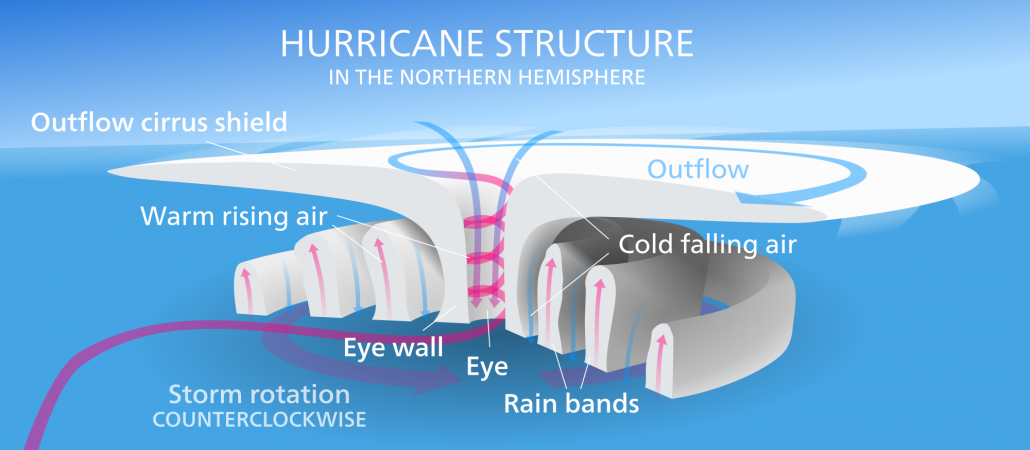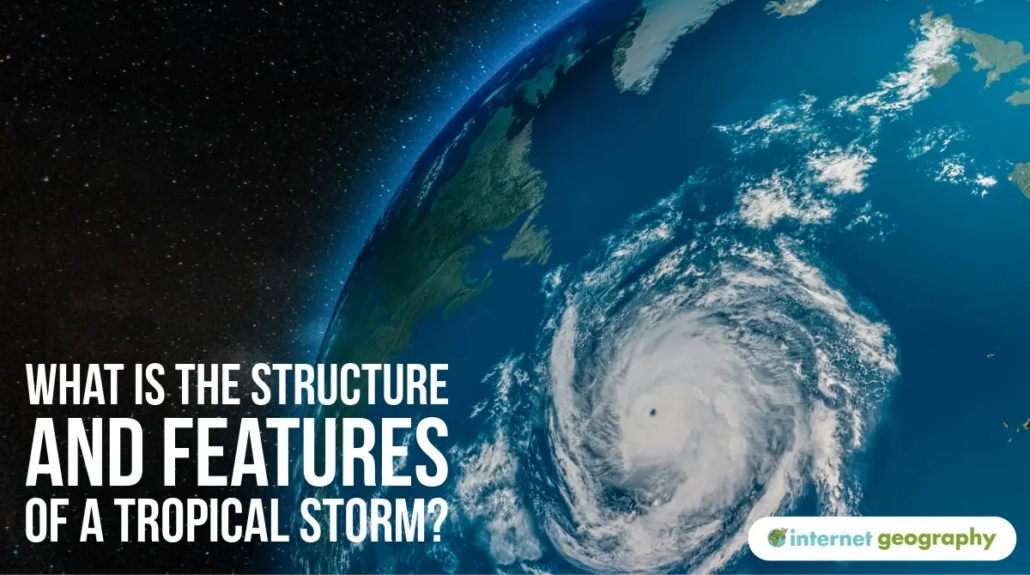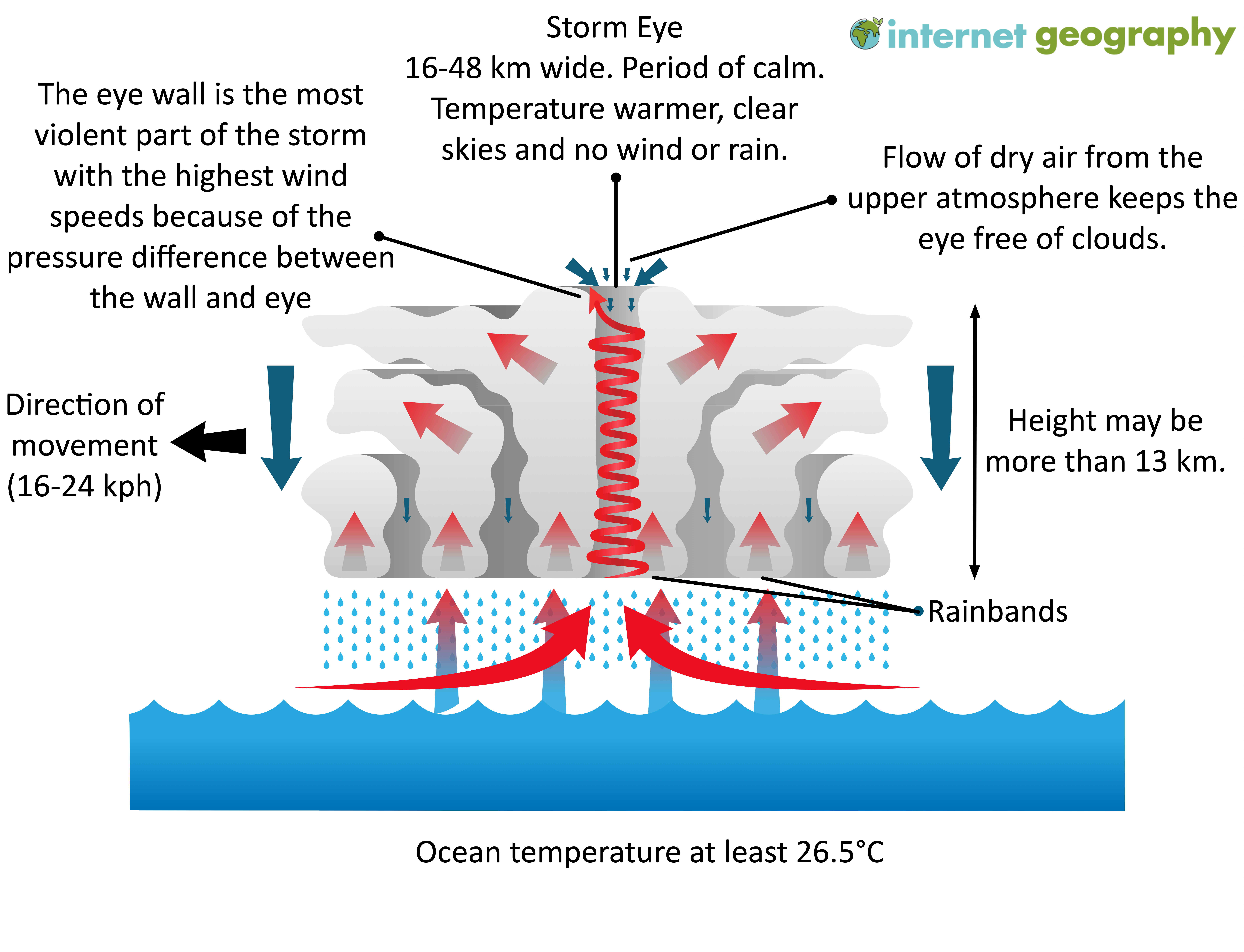What is the structure and features of a Tropical Storm?
The central part of the tropical storm is known as the eye. The eye is typically between 30 and 50 kilometres across. It is an area of calm, with light winds and no rain. It contains descending air. Large cumulonimbus clouds surround the eye. These are caused by moist air condensing as it rises. Wind speeds average 160km per hour around the eye.

The structure of a hurricane in the northern hemisphere
The weather system generates heat, which powers the storm, causing wind speeds to increase. This causes the tropical storm to sustain itself. Tropical storms rely on plenty of warm, moist air from the sea – this is why they die out over land.
Why Do Tropical Cyclones Spin?
The rotation of tropical cyclones is a defining feature, giving them their distinctive spiral shape. The strong winds within these storms are driven by air moving from high to low-pressure areas. In the case of tropical cyclones, this movement is influenced by the Coriolis effect. The Earth’s rotation causes these winds to be deflected into a spin, resulting in all tropical cyclones in the Northern Hemisphere rotating counterclockwise and those in the Southern Hemisphere rotating clockwise.
Case Studies
Below is a list of Tropical Storms, each with a link to a site containing information about it:
1. Hurricane Katrina – America’s costliest hurricane.
2. Hurricane Andrew – 1992 America’s second-costliest hurricane
4. Indian ‘Super Cyclone’ 1999 Orissa cyclone – The strongest and deadliest cyclone in the region since the Bangladesh cyclone of April 1991
5. Cyclone Eline – 2000 The cause of the major disaster in Mozambique
For current hurricanes, visit the US National Hurricane Centre website.


